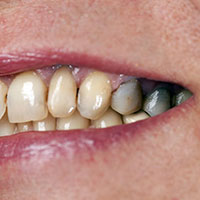 It’s no big secret that brushing and flossing your teeth on a daily basis can help prevent all sorts of oral diseases such as gingivitis and tooth decay. Why then have tooth decay rates amongst adults risen over the past five years?
It’s no big secret that brushing and flossing your teeth on a daily basis can help prevent all sorts of oral diseases such as gingivitis and tooth decay. Why then have tooth decay rates amongst adults risen over the past five years?
It’s hard to say.
Our diets tend to consist of large amounts of sugar – even in things you would typically think are healthy such as apple and orange juice. These sugars will cling to your teeth and provide a literal Vegas-style buffet table for bad bacteria that can lead to tooth decay or other oral diseases.
In addition to high-sugar diets, lack of dental maintenance also plays a significant role in the rise of tooth decay incidents in adults. Brushing and flossing alone are not enough to maintain a healthy mouth.
It’s highly recommended you visit a dentist at least once a year for a full dental cleaning that can clean hard-to-reach areas that regular brushing and flossing cannot.
We’re going to look at what tooth decay is, how a dentist will determine if you have it, and the five stages of tooth decay.
What is Tooth Decay?
Tooth decay is as it sounds. It’s the decay or rot of the various materials that make up your teeth. It’s caused by high levels of bacteria that feed off of the sugars, food scraps, and other organic material on your teeth and gums. If left unchecked and untreated, your teeth will start to rot, then fall out of your mouth.
Dentists have identified five different stages of tooth decay. The good news is that if the dentist catches your tooth decay at an early stage, it can be reversed entirely.
How Do Dentists Diagnose?
To diagnose tooth decay, your dentist will ask you a series of questions as they examine the inside of your mouth.
- Are your teeth sensitive?
- Do you have any tooth pain?
- Can you eat or drink hot/cold foods without pain?
The dentist will be probing your teeth with dental instruments to check for soft areas that could indicate tooth decay. An X-ray or two might be taken to confirm their suspicions.
Once the dentist has evaluated the overall state of your oral health, they will then let you know if you have tooth decay as well as the extent of it.
The good news is that the early stages of tooth decay can be treated with a wide variety of treatments including enamel remineralization treatment.
Five Stages of Tooth Decay
There are five distinct stages of tooth decay. Each stage can be viewed as a sort of proverbial cliff. Once you fall off the edge, you’re in the next stage of decay. It’s a useful tool that dentists can use to create a triage for your teeth and help stop the rot from progressing any further.
1st Stage
In the first stage of tooth decay, teeth will show signs of a sustained attack by bacteria. Little white spots will appear just below the surface of the enamel. This is indicative of a process called “demineralization,” which is the loss of essential minerals that help make your teeth healthy and white.
The good news is that if the dentist catches tooth decay at this early stage, it’s completely reversible. Treatments can include fluoride treatments which can help prevent demineralization from occurring.
2nd Stage
In this stage, the tooth enamel will show clear and visible signs of decay. Your teeth are now under full attack from bacteria. Teeth will erode from the underside outward which means that you may not notice it until it’s too late (a dental checkup would easily catch it).
This means the outer enamel will look completely normal until the cavity has grown in size that it will break through the surface of the enamel. At this point, there is no turning back. A dental filling will need to be performed to prevent further decay.
3rd Stage
When most people come to the dentist with a toothache, they’re usually in or very close to the third stage of tooth decay. The cavity will begin to eat away at the 2nd protective layer of the tooth, the dentin.
At this point in time, the dentist will recommend an immediate filling to prevent the cavity from breaking the third and final defense of the teeth: the pulp.
4th Stage
The bacteria in your mouth think of the pulp inside your teeth as a delicious chocolate cake. They will stop at nothing to get to that sweet, juicy, and delicious tooth pulp. While the bacteria in your mouth are having a lovely banquet, the pain you’ll be feeling will be quite considerable.
At this particular point in time, a dental filling will no longer work, and it’s time for a root canal. This is the only way to save the tooth from having to be extracted.
5th Stage
At this point in time, the infection has reached the root of the tooth and exited the tip of the structure of the tooth. If left untreated, the infection can spread to the gums, jawbone, and even other teeth.
The patient will experience significant swelling and pain. A root canal might save the tooth, but most dentists will often recommend a complete extraction.
Conclusion
Tooth decay is a serious medical condition and can lead to other health complications such as infections and even bone loss. This is why it’s so important to not only brush and floss twice a day but to make it a point to see a dentist once a year for a dental checkup and perhaps a deep cleaning.






 Website Powered by Sesame 24-7™
Website Powered by Sesame 24-7™